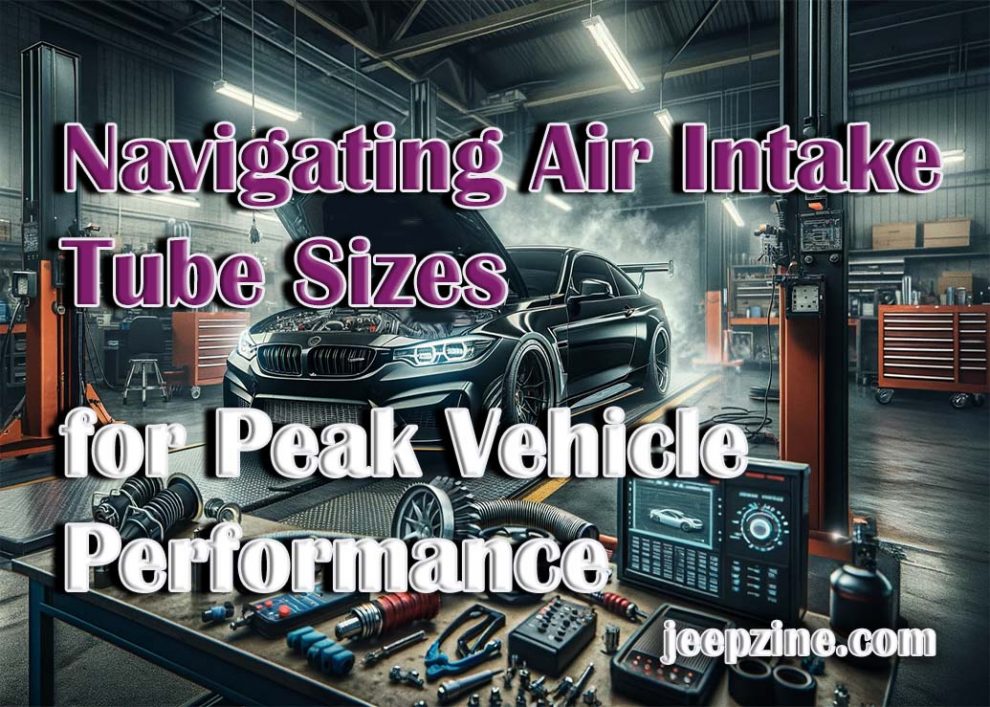This comprehensive guide delves into the critical considerations for selecting the appropriate air intake tube size for your vehicle, aimed at enhancing performance, fuel economy, and overall efficiency. Understanding the pivotal role of air intake systems, this article navigates through the mechanics, benefits, and types of air intake systems, providing insightful advice for enthusiasts looking to upgrade their vehicle’s breathing capabilities.
Vehicles are engineered for efficiency, but the quest for quiet operation often leads to compromised performance due to restrictive factory air intake systems. These systems, designed with narrow tubes and numerous bends, limit the amount of air reaching the combustion chamber, thus restraining the engine’s potential. Performance air intakes revolutionize this approach by employing wider tubes with minimal bends, allowing a greater volume of cooler, oxygen-rich air to enter the engine. This design modification is pivotal in optimizing combustion, significantly enhancing engine performance and efficiency.
Deciphering Air Intake Tube Sizing
The quest to answer “what size air intake tube do I need” hinges on a deep understanding of your engine’s requirements and the performance enhancements you aim to achieve. The size of the air intake tube directly impacts the volume of air channeled into the engine, with wider tubes facilitating a more substantial airflow. This increased flow of air enriches the fuel-air mixture, empowering the engine to generate more power while maintaining operational efficiency.
Enhancing Your Vehicle with the Right Air Intake Tube

Exploring Types of Air Intake Systems
The automotive market offers a variety of air intake systems, each designed to meet specific performance goals:
- Standard Performance Air Intakes enhance airflow by replacing the restrictive stock tubes with wider, streamlined tubes.
- Short Ram Air Intakes, although similar in design to standard intakes, do not prioritize cold air intake, focusing instead on the volume of air drawn into the engine.
- Cold Air Intake Systems stand out by relocating the air box outside the engine bay, drawing cooler air into the engine for more efficient combustion.
Incorporating the best cold air intake for 6.4 Powerstroke into your vehicle exemplifies how a well-suited air intake system can profoundly augment engine performance. Such upgrades not only bolster power output but also contribute to the overall efficiency and responsiveness of the vehicle.
Tailoring Air Intake Tube Size to Your Vehicle
The journey to selecting the ideal air intake tube size involves careful consideration of your vehicle’s specific needs and performance goals. It necessitates an understanding of how different tube sizes influence airflow and, consequently, engine performance. By aligning the air intake system’s characteristics with your engine’s specifications, you can unlock the full potential of your vehicle, achieving a harmonious balance between power, efficiency, and responsiveness.
Conclusion
The decision to upgrade your vehicle with a performance air intake system, and specifically to determine the most suitable air intake tube size, is a strategic move towards enhancing your vehicle’s performance. It’s a step that promises not only an immediate boost in power and efficiency but also a more satisfying driving experience. As you navigate the options available, consider the unique requirements of your engine and the performance enhancements you desire to ensure that your investment yields the maximum benefit.

